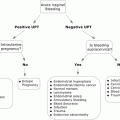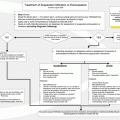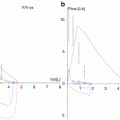Opioid (route)
Conversion from oral opioid to oral morphine
Conversion from parenteral opioid to same oral opioid
Initial rescue dose in an opioid-naïve adult
Morphine (PO, IV)
1
1.0:2.5
PO 5–10 mg, IV 2–4 mg
Hydromorphone
5
1:2
PO 1–2 mg, IV 0.5–1.0 mg
Fentanyl (patch, lozenges, IV)
Consult chart supplied by manufacturer
Consult chart supplied by manufacturer
IV 25 μg
Oxymorphone (PO, IV)
3
10
PO 5 mg, IV 0.5 mg
Meperidinea (PO, IV)
0.1
4
IV 25 mg
Oxycodone (PO)
1.5
NA
PO 5 mg
Methadone (PO, IV)
Variable (based on MEDD)
1:2
NA
4.
Prescription of 10–15 % of the MEDD as the rescue dose.
5.
Assessment of response to an opioid medication within 15 min of delivery of the initial dose. The initial dose can be repeated if adequate analgesia is not achieved.
6.
Assessment of function in addition to the subjective pain reported by the patient.
7.
Adjustment of the basal opioid dose either by adding the rescue doses needed over the past 24 h or an incremental increase by 30 %.
8.
For patients whose pain is refractory to these initial steps, prompt consultation with pain management or palliative care experts, if available, is recommended.
Opioid Analgesics
In general, opioids are classified as weak or strong. Weak opioids include hydrocodone, codeine, and tramadol. Strong opioids include morphine, hydromorphone, oxycodone, oxymorphone, meperidine, fentanyl, sufentanil, methadone, and levorphanol (Table 12.1). Morphine, hydromorphone, and fentanyl are frequently used parenterally to control pain in the emergency setting.
Opioid partial agonists and mixed agonist-antagonists have limited roles in cancer pain management owing to their ceiling effect and mixed receptor activity. In addition, they exhibit increased central nervous system activity and pose a withdrawal risk in patients already taking opioid agonists.
Adjuvant Analgesics
Analgesics can be beneficial when added to opioids in certain pain situations. For example, antidepressants such as amitriptyline and anticonvulsants such as gabapentin can be useful in management of neuropathic pain syndromes such as chemotherapy- and diabetes-induced neuropathy. Bisphosphonates are frequently used for management of painful bone metastases. Also, corticosteroids such as dexamethasone can be added when managing neuropathic, visceral, or bone pain and are particularly useful in controlling the pain associated with spinal cord compression.
Fatigue and Weakness
Fatigue is one of the most common symptoms in patients with advanced cancer . The incidence rate of cancer-related fatigue (CRF) ranges from 60 % to 90 %. CRF is defined as an unusual, persistent, subjective sense of tiredness related to cancer or its treatment that interferes with usual functioning. Fatigue can greatly decrease a patient’s quality of life and interfere with a patient’s ability to perform physical and social activities. It may also affect a patient’s decision making regarding future treatments, leading to refusal of potentially curative or supportive treatment. Fatigue has a major negative impact on both the patient and his or her family. It interferes with activities of daily life and robs patients of time and energy required to engage in routine activities with their loved ones. This greatly decreases the patient’s quality of life.
In the majority of patients with advanced cancer , the etiology of fatigue is unclear, but its effects are consistent. Previous studies revealed that CRF has a multidimensional etiology in these patients. Different mechanisms directly or indirectly impact brain function to cause the subjective symptom of fatigue. In recent years, researchers have found that several cytokines and other pro-inflammatory mediators produced by the host in response to the presence of cancer are associated with fatigue. Some patients present with transient fatigue caused by reversible factors such as infection, anemia, dehydration, and metabolic and electrolyte disturbances.
Fatigue is a common reason for emergency room visits in patients with advanced cancer. In a study conducted at the MD Anderson Emergency Center , severe fatigue (rated as 7 or higher on a scale of 0–10) was reported by more than half of the patients upon admission. Patients with severe fatigue were likely to be unstable or unable to be discharged from the hospital.
Assessment of Fatigue
Several tools are available for the assessment of CRF. The severity of fatigue can be quickly assessed using a numerical scale from 0 to 10, in which 0 represents no fatigue and 10 represents the worst fatigue imaginable. Comprehensive assessment tools such as the Functional Assessment of Chronic Illness Therapy-Fatigue subscale are more multidimensional and consider the impact of fatigue on activities and function. In addition, assessment of potentially reversible causes of fatigue, such as anemia, infection, dehydration, mood disorder, drugs, and metabolic and electrolyte disturbances, can further aid the management of fatigue in these patients.
Management of Fatigue
Despite its prevalence, severity, and effects on quality of life in patients with advanced cancer, the available treatment options for CRF are limited. In the emergency setting, management of fatigue should focus on treating its underlying reversible causes first. Pharmacologic treatment of fatigue can be attempted for a patient with chronic CRF in whom treatment of its potentially reversible causes does not result in subjective improvement or if no reversible causes of the fatigue are identified. Consultation with symptom management and palliative care experts is highly recommended for such patients to improve the long-term effectiveness of treatment. Pharmacologic agents that can be used for treatment of fatigue include corticosteroids, psycho-stimulants such as methylphenidate, and antidepressants. Furthermore, testosterone replacement can be considered to treat fatigue in male patients.
Stay updated, free articles. Join our Telegram channel

Full access? Get Clinical Tree







